How to Thin Acrylic Paint Correctly and Consistently
This post may contain affiliate links which could provide us a small commission for our work at no cost to you.
Read the full disclosure here.
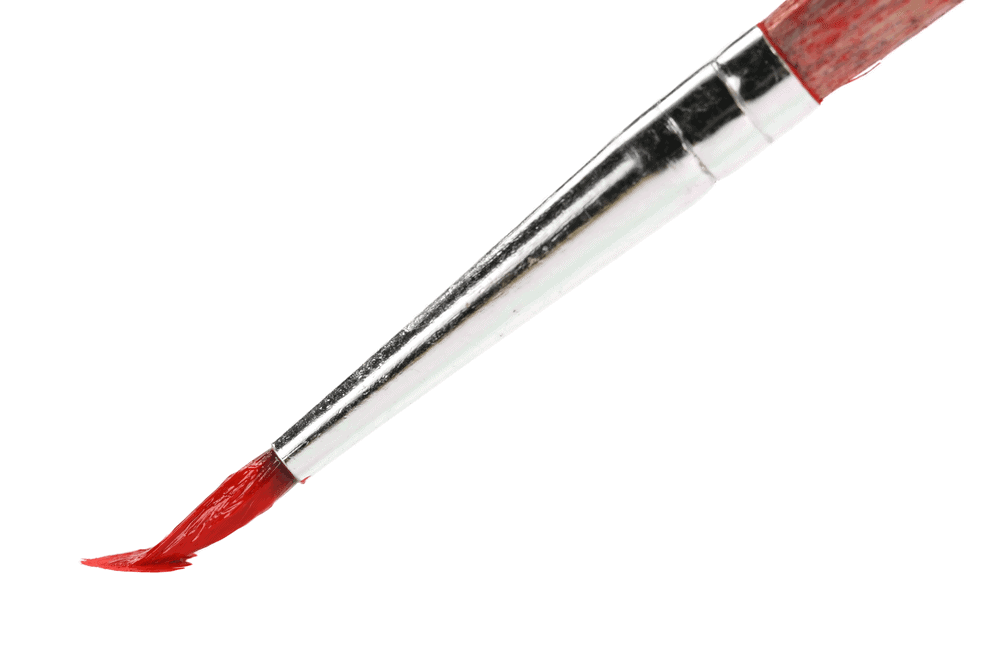
Any artist would know that in order to achieve the best results, one has to be familiar and adept with the medium that he or she is using. Acrylic is considered as one of the most versatile mediums around — knowing how to thin acrylic paint gives you even better control.

While oil and watercolor are commonly used by professional painters, acrylic is perhaps the most ideal for beginners. Why? Because it’s water-soluble, water-resistant, and dries quickly. These characteristics also make acrylic one of the most flexible painting mediums.
How to Thin Acrylic Paint
Acrylic paint is water-soluble, so it can be thinned with water. There are also thinning mediums that can do the job effectively. Acrylic paint is highly versatile. The range of thinning can go from the slightest to the thinnest consistency. It may achieve an oil paint-like finish or imitate the appearance of watercolor when thinned.
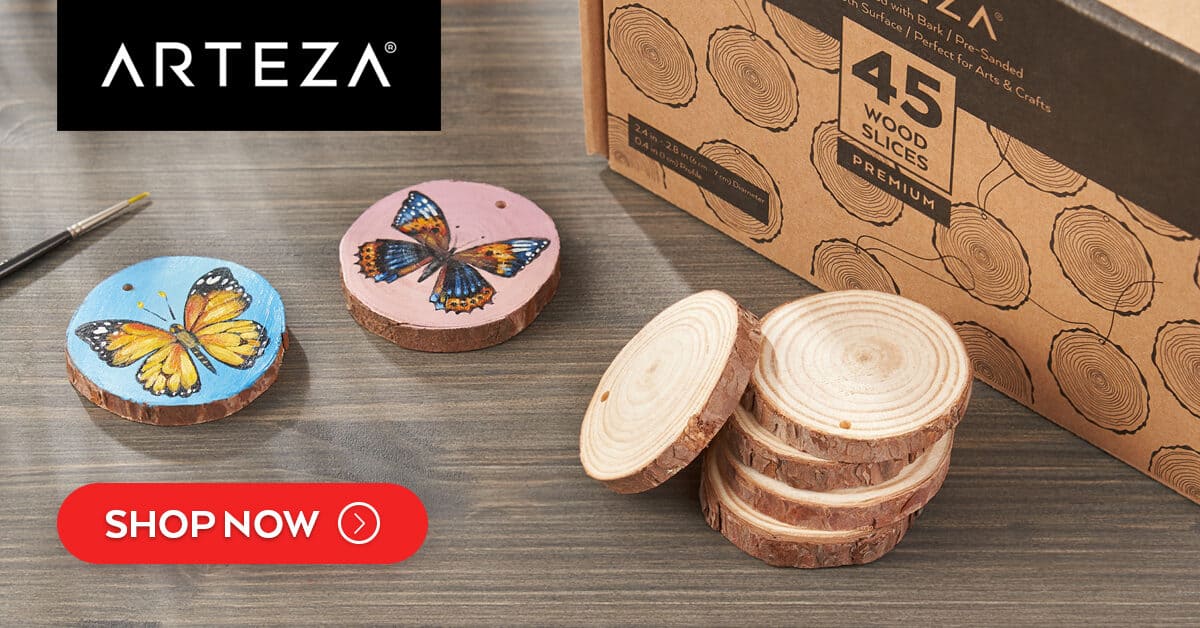
Before elaborating on the steps on how to thin acrylic paint, let’s discuss the unique characteristics of this medium. What is acrylic paint and why is it easier to use and manipulate compared to oil and watercolor? What makes it such a highly desired painting medium by both amateur and professional artists?
What Are the Characteristics of Acrylic Paint?
Acrylic paint is composed of a pigment suspended in a synthetic resin binder. The binder is an acrylic polymer emulsion that is highly water-soluble. It holds the particles of pigment together and gives acrylic paint a toothpaste-like consistency when you squeeze it out of the tube.
Compared to traditional oil and watercolor mediums, the use of acrylic paint only became popular during the 1920s to the 1930s. Diego Rivera and other Mexican muralists were among the first to use acrylic paint on a large scale. Influenced by these muralists, American artists (like Andy Warhol and David Hockney) began to follow suit. Acrylic paint became commercially available by the 1950s. It quickly became popular due to its amazing characteristics:
- Water-soluble
- Non-toxic
- Water-resistant
- Flexibility
- Durability
- Fast drying time
- Varying forms (e.g. tubes, jars, squeeze bottles, ink bottles)
- Varying levels of viscosity or thickness
Besides all these desirable qualities, acrylic paint can also be used on a variety of painting surfaces.

What Thinners Can Be Used on Acrylic Paint?
When learning how to thin acrylic paint, it’s important to know the qualities of the thinner you’re using.
The Primary Thinner: Just Add Water
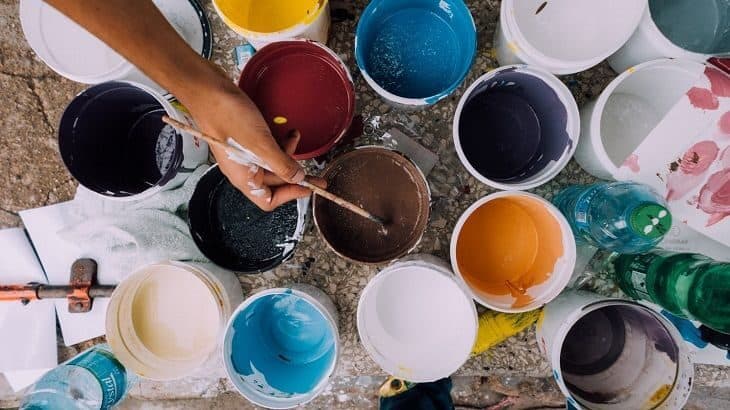
When it comes to acrylic paint, water is a primary thinner because it is capable of breaking down the binder. The amount of water used will depend on the painting surface and the artist’s desired effect. However, effective as it may be, you need to exercise caution when using water as a thinner. The general rule set by acrylic paint manufacturers is to do a 50 percent mixture or to work with a ratio of 1:2. Using too much water may cause the paint to chip or peel, especially if the paint is applied on a primed surface.
To give you a better idea of the thinning capabilities of water, adding 30 percent of water to acrylic paint will thin it but will still allow it to coat a surface. Adding twice as much water (60 percent) will result in a watery consistency which is referred to as a “wash.” When applied to an absorbent surface, the “wash” will only show a hint of color called a “stain.
Acrylic Thinning Mediums
Often regarded as “flow improvers,” acrylic thinning mediums are specially designed for thinning acrylics. These mediums are capable of thinning acrylic paint to a level that’s thinner than a wash. However, acrylic thinning mediums can be expensive — this is why they are used mostly by professional artists.
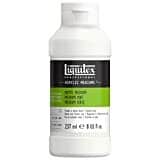 Liquitex Professional Fluid Medium, 8-oz, Matte
Liquitex Professional Fluid Medium, 8-oz, Matte
- Creates a matte, non-reflecting finish when added to acrylic colors
- Lightweight, non-toxic; Opaque when wet, translucent when dry
- Intermixable with Liquitex Professional Acrylic Paint Colors and Mediums
- Conforms to ASTM D4236; Safe for educational use
Unlike water, acrylic thinning mediums are easier to use. You won’t have to worry about over-saturating your acrylic paint nor the possibility of flaking or peeling to occur. Thinning mediums also contain acrylic polymer emulsions so they won’t dilute the paint as much as water does. You can use as much thinning medium as you want to achieve your desired consistency.
Techniques on How to Thin Acrylic Paint
Regardless of the thinner you use, it’s important to practice the right thinning techniques. Here are some helpful ones that you might want to keep in mind.
1. Small Amounts, As Needed
Whether you are using a palette or a mixing container (such as a bowl or a plastic container), it’s always good practice to only work with a small amount of acrylic paint at a time. Remember that acrylic paint dries quickly — using too much paint at a time will only lead to unnecessary wastage.
2. Add Water Moderately
To thin acrylic paint slightly, use your brush to regulate the amount of water that you’re going to apply to the paint. Wet the brush in clean water and then use it to thin the paint to the right consistency.
To thin the paint significantly, use the recommended ratio (1:2 at most). Mix paint and water thoroughly with your brush while ensuring that the water is evenly distributed. Doing so will prevent clumping. Make sure to have a paper towel ready to blot and clean your brush with after you’re done mixing. Excess moisture from your brush can cause the paint to thin even more when you start painting. A very wet brush can also lead to dripping which can ruin your painting.
3. Better Control With Thinning Mediums
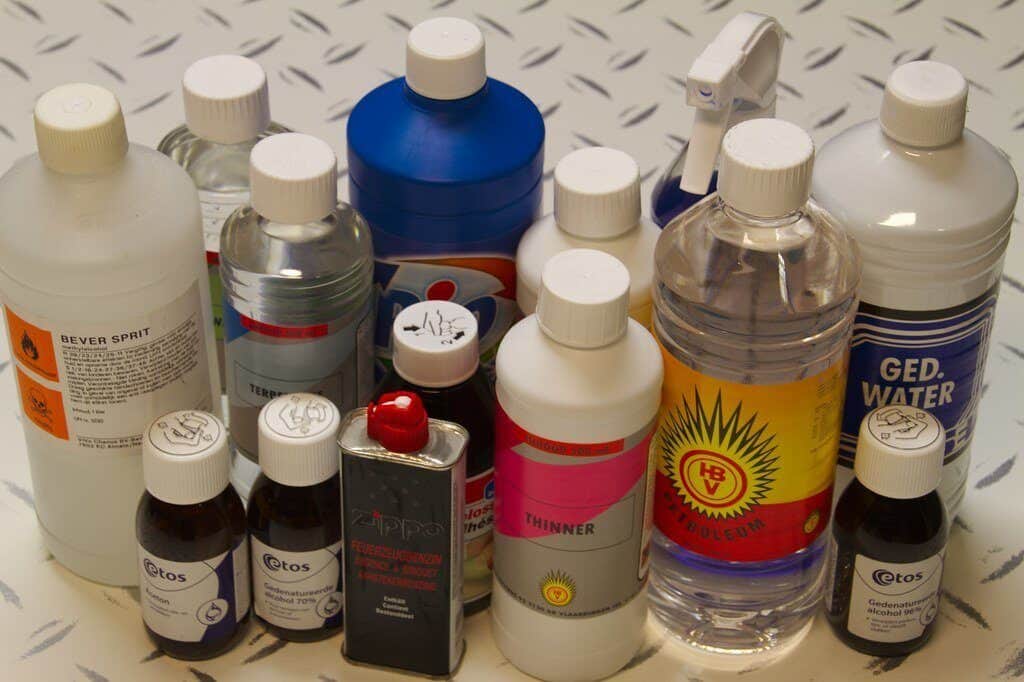
For more controlled thinning, use thinning mediums or flow improvers in place of water. Thinning mediums are especially helpful in keeping your paint from drying out while keeping the thinning process under control.
4. Consistency Is Key
To ensure that you have achieved the right consistency, have a palette knife and a surface (such as a section of spare canvas) ready to spread the paint on.
5. Revive Thickened Paint
Acrylic paint that has hardened completely will be impossible to revive. However, if the paint is still tacky or gets indented when you poke at it with your finger or a brush, it can still be restored. Add water or a thinning medium to the paint while using your palette knife to revitalize it. In the process of reviving salvageable paint, make sure to get a good grip on the palette knife and to do it on a stable and sturdy surface.
6. Practice Makes Perfect
The best way to understand the benefits and constraints of acrylic paint as a medium is to experiment with it. Use this medium’s versatility to your advantage while working around its limitations. Do washes and stains and experiment with tints and effects. This will give an overall feel of how much thinning you will need to achieve the results you’re aiming for. All that practicing and experimenting will pay off as your intuition for thinning paint becomes more developed. Take note of the processes involved and the amounts of thinning medium (or water) needed whenever you attain a desired thickness or viscosity.
7. The Value of Layering
When you become adept with the use of acrylic paint, you will learn the value of working in layers. For example, use acrylic washes to create a backdrop or scene then allow to dry before painting over it. Once acrylic paint dries, it stops being water-soluble. You can paint over it confidently without having to worry about diluting the dried paint with the fresh batch that you’re using.
8. Fat Over Lean
Any professional painter adheres to the fat-over-lean approach when painting in layers. The general rule is to start thin and to always put a thicker layer of paint on top of the previous layer. Don’t compromise the overall integrity of your artwork by putting thin layers at the very top. It will most likely cause cracking because drastic contractions in the paint will occur.
9. Blend Colors Quickly
As you practice, you will get the hang of blending colors quickly. To slow down the drying process, use a piece of dampened paper of card stock while blending colors. If you’re using a plastic palette, make it a habit to mist your paints from time to time to prevent them from drying up too fast.

10. Primer Equals Better Results
Using gesso as a primer, especially on non-traditional surfaces (such as metal and wood), makes for an effective base because acrylic paint will easily adhere to it. Additionally, gesso can also be used for thinning and extending the paint — use it to tint your paint slightly by stirring it in using a brush. However, don’t use gesso with water or another thinning medium as it may cause the paint to thin too much.
Conclusion
After knowing the characteristics, advantages, and disadvantages of using acrylic as well as the techniques and best practices on how to thin acrylic paint you’re probably raring to get started on your next painting project.
While knowing these things firsthand will help guide you through the process of how to thin acrylic paint, nothing beats practicing and experimenting with the medium to develop your artistic instincts. Teaching you the basics is one thing, the outcome will still be up to you.
Knowing how to thin acrylic paint is not an exact science. In the end, the techniques you apply and the integrity of your work will still depend on your sensibilities as an artist.
Last update on 2021-02-25 at 14:06 / Affiliate links / Images from Amazon Product Advertising API
